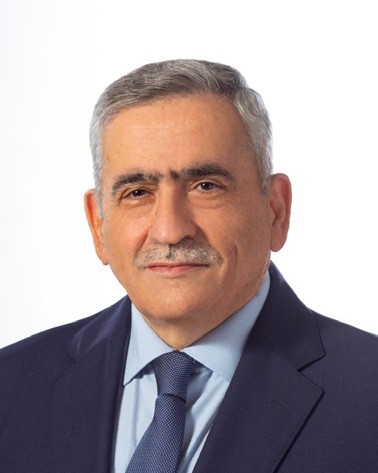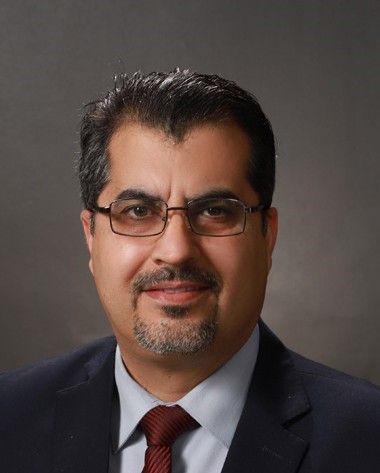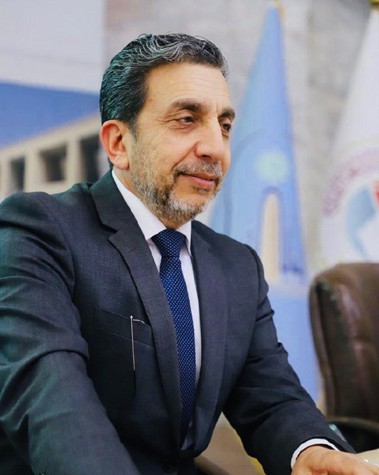ABSTRACTS

Dynamics of Student Engagement in Higher Education: Emerging Trends, Institutional Impacts, and Key Challenges
Crystal M. Ghantous1,Heba Hellany2,Adnan Badran3 and Elias Baydoun1
1Department of Nursing and Health Sciences, Faculty of Nursing and Health Sciences, Notre Dame University-Louaize, Keserwan 72, Lebanon
2Department of Biology, American University of Beirut, Beirut 1107, Lebanon
3Arab Academy of Sciences, Beirut, Lebanon
Higher education student engagement (HESE) is now recognized as a key indicator of institutional excellence and student success. Beyond a single metric, HESE is a multidimensional, integrative construct arising from the alignment of pedagogical design and facilitation with institutional and technological infrastructure. Amid the linguistic diversity, digital inequalities, and rapid post-pandemic hybridization across the Arab region, HESE has emerged as an educational and strategic priority. Accordingly, attention is shifting from mere content delivery to the intentional design of learning environments that sustain student participation, enhance critical and higher-order thinking, and cultivate a sense of belonging.
This presentation examines the multiple dimensions, strategies, and impacts of HESE, with particular attention to the Arab context. It begins by describing the behavioral, cognitive, and affective dimensions and analyzes their challenges, cultural-societal influences, and implications for employability and policy. The post-COVID-19 educational landscape is explored, comparing pre- and post-pandemic
practices and illustrating how the shift to online and hybrid models heightened the need for well-structured, active engagement.
The presentation then outlines pedagogical strategies and tools to improve HESE: active learning approaches and digital technology integration, such as learning management systems, online collaboration tools, and virtual and augmented reality, as well as community engagement and student participatory decision-making. The discussion is contextualized with global and regional cases that highlight how leading universities foster inclusive, student-centered pedagogy. It then turns to the impacts of HESE in the Arab world, emphasizing contributions to academic performance, skill development, institutional reputation, and student retention.
Despite these contributions, persistent challenges to improving HESE include the dominance of traditional pedagogies, limited faculty-student interaction, cultural and gender barriers, and technological constraints. Advancing higher education, therefore, calls for strategic emphasis on regional and international collaboration, capacity-building, digital innovation, and community engagement to build more inclusive, resilient, and globally connected universities.

Student Engagement in the Digital Era: Fostering Student Innovations in Bolstering Industry 4.0 in the Arab World
Nathir M. Obeidat, Mohammed A. Khasawneh, Rida A. Shibli, and Nael H. Thaher
University of Jordan, Amman, Jordan
Ongoing technological advancements have brought with them the birth of the 4th industrial revolution in a manner that has necessitated significant reforms to the academic models that have prevailed for centuries. Classical academic models, particularly lecture-based strategies, can no longer cope with the rising aspirations of younger generations that have grown up adapted to current-day trends that rely heavily on the ubiquity of communication technologies that have become within reach of almost every human on the planet. Such adaptations, coupled with heavy reliance on gadgets that have embedded within them extreme capabilities, must be leveraged to customize the diverse spectrum of learning experiences of the constituents. Better yet, since the world has moved towards educational regimes that have placed the learners to the front and center by moving into student-centric learning paradigms, more room has been opened up for students to provide their input into the academic process, leading to a betterment in the yield of these educational systems.
During the last quarter of the 20th century, technology has progressed by leaps and bounds in a manner that has witnessed the creation of technology companies that came about, in many cases, because of aspiring student innovations evolving at several world-renowned academic institutions. In the last 3 decades alone, the evolution of what has become known as Artificial Intelligence (AI) has brought paradigm shifts that have revolutionized the lifestyles of human beings that just a half century ago would have seemed most unlikely. The dawn of the AI age has brought with it accelerated rates of progress and achievements that have already started to revolutionize the ways we conceive things. This, inherently, has not only touched upon the speed with which students can learn, but it also has brought with it greater potential ways of supporting our abilities to undertake productive research and to produce better research results faster.
The advent of the digital age, fortified by the leverage of AI, offers an ideal environment for students to fulfill their learning aspirations and enhance their appetite for knowledge acquisition. It provides students with tools that can bolster their learning experiences and offer them various enablers that can stretch their imagination as they learn. For educators, the digital age has helped teachers with educational tools and classroom support in ways that would have not been possible just 25 years ago.
In this chapter, we address the value added through student engagement in both a conventional classroom setting and by helping the academic system adapt better to student learning needs. We emphasize the importance of utilization of AI tools in engaging students to improve existing academic offerings and pinpoint in depth the effectiveness of AI tools in encouraging more student involvement in various technology-oriented innovations and more-productive research endeavors.

Student Engagement in Digital Learning: A Case Study at the University of Petra
Rami A. Abdel-Rahem, Wael Hadi, Faisal Aburub, Naser Jamal, and Mayyas Al-Remawi
University of Petra, Amman, Jordan
There is no doubt that digital transformation has been expanding in the higher education sector. Since the COVID-19 pandemic, electronic and blended learning have been continuously increasing. Many Arab universities have made this form of education a fundamental part of the teaching and learning process. Recently, artificial intelligence (AI) has been rapidly spreading in different life applications and the education sector is not an exceptional. But have students been able to engage with this type of learning, and has this form of education become a competitor to traditional face-to-face learning? Both digital and traditional education have their advantages and disadvantages that we must consider.
At the University of Petra, there are three electronic learning platforms available: Blackboard, Moodle, and Microsoft Teams — all of which are used in the educational process. Digital tools like Moodle and Blackboard have become important parts of university education. Recently, AI has also been incorporated into the education process at the University of Petra (UOP), albeit to a limited extent.
This study aims to explore how students at the UOP are engaged with digital education offered by these platforms. A survey will be distributed to students from all departments to gather their opinions about their behavioral, cognitive, emotional, and social engagement with electronic education.
The study also connects to the UOP’s vision of promoting modern technology and artificial intelligence (AI) tools in education to create smarter, more personalized learning experiences. Understanding student perceptions will help in aligning digital learning platforms with UOP’s efforts to integrate AI features that support innovation, improve student engagement, and enhance overall academic performance.
The findings will provide recommendations to improve the use of technology in teaching and learning. They will also highlight the importance of using digital tools to create more interactive, engaging, and supportive learning environments and offer proper training and support for students and teachers.

Fostering A Student Innovation Adaptive Learning Environment in the Digital Age in Higher Education in Arab States
Hamdan Al Fazari
Sohar University, Sohar, Oman
Student innovation in the digital age involves embracing students’ participation in innovation from the earliest stages of education; especially in Higher Education (HE). Higher Education Institutions (HEIs) shape student innovation by offering the knowledge and the required skills to use technology to enhance research and reach innovation. In this regard universities play a critical role in fostering student innovation by creating an environment that fosters creativity, risk taking and critical problem solving. This fostering of innovation is achieved through entrepreneurship education; establishing dedicated incubation centres; forming partnerships and collaboration with industry; hosting events like Hackathons; student research open days and of course by fostering a culture of innovation and encouraging it by showcasing successful innovation outcomes. Furthermore, in HE, the digital age enables student innovation through personalized learning experiences, access to resources and tools, and new learning methods. Digital tools like online platforms, virtual simulations, and AI-powered learning systems enhance engagement and foster more flexible and collaborative learning environments. Therefore, the use of digital transformation in HE offers immense promise in fostering the student innovation that leads to transformation of the educational landscape. In addition, digital transformation has the potential to bring a massive paradigm shift in fostering student innovation, offering new opportunities for nurturing talent, developing a student research nexus, improving student innovation outcomes, and enhancing teaching practices.
This chapter examines the best practices developed in Arab states to foster student innovation in the digital age, exploring the ways in which technology and digital transformations can revolutionize innovation. By leveraging digital transformation technologies in fostering innovation, educational institutions can create adaptive innovation learning environments that provide students with the relevant teaching and learning knowledge-base; state-of-the art modernized laboratories; appropriate incubation and entrepreneurship facilities; and research and development centres to support educators in developing innovative ideas to ignite students innovation. This chapter will further examine the current landscape of digital transformation in HE in fostering student innovation, highlighting the opportunities and challenges associated with linking digital transformations into educational settings, the innovation environment, the job market, and the readiness of Arab states to foster innovation in the digital age. The study carried out regarding “Fostering Innovation in Arab Universities: An Analysis of Educational Policies in Scientific Research” concluded by stressing the need to develop comprehensive and integrated educational policies to transform Arab universities into global leaders in innovation, highlighting the potential positive impact of such a transformation at the, thus, social and economic levels. By embracing digital age technologies and best practices in the HE, Arab universities can position themselves as leaders in fostering student innovation, thus preparing them for the challenges and opportunities of their being the innovators of the future.

Revolutionizing Student Engagement with AI: Opportunities, Challenges, and Future Directions
Isam Zabalawi, Vladimir Simovic, and Helene Kordahji
Australian University, West Mishref, Safat 13015, Kuwait
Artificial Intelligence (AI) is revolutionizing student engagement, transforming the way students interact with learning materials, instructors, and their academic environment. Traditionally, student engagement was limited to classroom participation and structured assignments, but AI has introduced personalized learning pathways, real-time feedback, adaptive assessments, immersive experiences, and predictive analytics that optimize academic support. AI-driven tools, such as virtual tutors, chatbots, and intelligent learning platforms, provide students with instant access to tailored resources, ensuring continuous learning beyond classroom walls.
This chapter explores the multifaceted impact of AI on student engagement, beginning with an examination of AI’s role in adaptive learning and personalization, where machine learning algorithms analyze students’ learning behaviors to provide customized content and pacing. The discussion then moves to AI-driven predictive analytics, which enable universities to identify at-risk students early, allowing for timely interventions and personalized academic support strategies.
The chapter also highlights the opportunities AI presents in fostering collaborative learning, including AI-powered peer matching, gamification, and virtual reality (VR)-driven interactive education. AI’s ability to break down language and accessibility barriers is examined through its role in speech-to-text technologies, real-time translations, and assistive tools for students with disabilities. The integration of AI in career readiness is also explored, showing how AI-powered resume analysis, job recommendations, and interview coaching are preparing students for a rapidly evolving workforce.
However, while AI brings significant benefits to student engagement, it also introduces critical ethical and practical challenges. The chapter critically examines concerns
related to data privacy, algorithmic bias, the risk of over-reliance on AI, and the potential reduction of human interaction in learning environments. Universities must ensure that AI is implemented responsibly, balancing technological efficiency with human mentorship, emotional intelligence, and ethical oversight.
Finally, the chapter outlines future directions in AI-driven student engagement, including the development of emotionally intelligent AI tutors, AI-driven metaverse education, and interdisciplinary AI literacy programs. It concludes with strategic recommendations for universities, emphasizing the importance of ethical AI governance, faculty training, and a student-centered approach to AI integration.
By the end of this chapter, it is evident that AI is not merely a tool for automation but a transformative force in higher education. The challenge ahead is not whether AI should be part of student engagement, but rather how institutions can integrate AI ethically and effectively to create a more inclusive, engaging, and personalized learning experience.

Navigating Possibilities: Scenario Planning for Future Learners
Ghassan Aouad
Abu Dhabi University, Abu Dhabi, United Arab Emirates
Scenario planning is a strategic method employed to visualize and prepare for potential future developments, especially in the context of education and learning. As the landscape of learning continues to evolve due to technological advancements, societal changes, and global challenges, understanding the potential trajectories of future learners becomes paramount. This paper explores various scenarios for future learners, considering factors such as demographic shifts, technological integration, educational accessibility, and the impact of artificial intelligence. By analyzing these scenarios, educators, policymakers, and institutions can better anticipate the needs and characteristics of upcoming generations of learners. The study advocates for adaptive educational frameworks that embrace flexibility, inclusivity, and innovation. Ultimately, scenario planning serves as a vital tool in shaping proactive strategies that empower future learners to thrive in a rapidly changing world.


The Role of Experiential Learning in Fostering Student Engagement in the Digital Age
Isam Zabalawi1,Ghaleb El-Refae2, and Helene Kordahji1
1Australian University-Kuwait
2Al Ain University, United Arab Emirates
In today’s rapidly evolving digital landscape, experiential learning has become a crucial strategy for fostering student engagement and bridging the gap between theoretical knowledge and real-world application. As traditional teaching methods struggle to maintain student motivation and participation, universities are embracing experiential learning to create immersive, student-centered educational experiences. By leveraging digital tools and emerging technologies, educators can provide dynamic, hands-on learning opportunities that enhance critical thinking, problem-solving, and collaboration.
This paper explores the role of experiential learning in the digital era, grounded in key educational theories such as Kolb’s Experiential Learning Cycle and Vygotsky’s Social Constructivism. It examines how technology-enhanced pedagogies, such as project-based learning, virtual internships, AI-driven adaptive learning, and digital simulations, are transforming student engagement. Through case studies from disciplines like engineering, business, health sciences, and technology, the chapter demonstrates how institutions worldwide are successfully integrating experiential learning to improve both academic performance and student retention.
A central theme of this paper is the role of digital tools in supporting experiential learning. Innovations like AI, virtual and augmented reality, gamification, and learning analytics are reshaping the learning experience. These technologies provide immersive opportunities for students, personalize feedback, and allow them to take ownership of their learning journeys. By integrating these tools, educators can create more engaging environments that foster critical thinking and deeper learning.
However, implementing experiential learning in the digital age presents several challenges. Issues such as digital accessibility, varying levels of digital literacy, faculty adaptation, and complex assessment models must be addressed to ensure equitable and impactful learning experiences. This paper examines these barriers while offering best practices for integrating experiential learning into hybrid and online models, emphasizing the need for faculty development and institutional support.
Finally, the paper explores methods for assessing and measuring the impact of experiential learning on student engagement. By utilizing qualitative and quantitative data, such as surveys, learning analytics, and direct feedback, institutions can refine their strategies and improve the effectiveness of experiential learning initiatives. Looking ahead, the paper discusses the future of experiential learning in the context of digital transformation, highlighting its role in preparing students for a rapidly changing, technology-driven world and ensuring lifelong learning and career readiness.

AI-Driven Strategies to Foster Student Engagement and Institutional Excellence in Higher Education
Hamad Odhabi
Abu Dhabi University, Abu Dhabi, United Arab Emirates
The transformation of higher education in the digital age requires more than superficial integration of technology—it demands a strategic and systemic shift in how institutions engage students, make decisions, and operate efficiently. Artificial Intelligence (AI) stands at the center of this transformation, offering unprecedented opportunities to reimagine education systems to be more responsive, student-centered, and data-driven. This chapter explores how AI can be effectively harnessed to foster student engagement and drive institutional excellence, offering practical insights from initiatives implemented at Abu Dhabi University.
Today’s learners are digital natives who expect personalized, flexible, and technology-enhanced educational experiences. Traditional models of instruction, assessment, and engagement often fall short in meeting these expectations. At the same time, universities are under increasing pressure to improve operational efficiency, ensure academic quality, and demonstrate their value to both students and society. AI offers powerful tools to meet these dual imperatives—improving student outcomes while enhancing institutional effectiveness.
This chapter introduces a strategic framework that places AI at the core of institutional innovation. It outlines the role of AI in:
• Personalizing learning experiences through adaptive content delivery and intelligent tutoring systems.
• Using predictive analytics to identify at-risk students and recommend timely interventions.
• Automating repetitive academic and administrative tasks to increase institutional agility.
• Enabling data-driven decision-making through real-time dashboards and AI-generated insights.
• Enhancing co-curricular engagement through intelligent platforms that track student development across graduate attributes.
The chapter describes Abu Dhabi University’s use of AI through ADUConnect, a no-code platform that streamlines student engagement, links activities to graduate attributes, and automates event, survey, and peer support management—empowering staff and students to scale initiatives independently.
Another case highlights the digitization of faculty evaluation and curriculum development, where AI-enabled tools simplify the mapping of course learning outcomes, streamline program approvals, and enhance transparency in performance reviews. These innovations reduce administrative burden, improve consistency, and make institutional processes more resilient and scalable.
The use of predictive analytics to identify and support at-risk students, improving retention and satisfaction is emphasized, as is the role of no-code and low-code AI tools in enabling non-technical staff to create solutions, accelerating innovation and reducing reliance on external developers.
The discussion is grounded in the broader context of institutional change management, highlighting the importance of leadership support, capacity building, ethical AI practices, and inclusive stakeholder engagement. Special attention is given to ensuring data privacy, promoting fairness, and avoiding algorithmic bias in student-facing applications.
In the concluding section, the chapter offers a scalable AI roadmap for universities in the Arab world and beyond. The roadmap includes stages such as digital readiness assessment, pilot implementation, staff upskilling, cross-functional collaboration, and ongoing impact measurement. The objective is to support institutions in aligning their AI strategies with their mission, values, and long-term goals.

Benefits and Challenges of Intelligent Chatbots in Higher Education
Dhiya Al-Jumeily and Sulaf Assi
Liverpool John Moores University, Liverpool, UK
Robotics popularity surged over the last few years in many sectors including higher education. Advancement in robotics was supported by artificial intelligence. Intelligent chatbots became attractive to mentors and students due to their adaptability in different contexts and ability to provide vast amount of information in a short time. With advancements in natural language processing, chatbots reinforce knowledge, monitor students’ performance and ensure optimal learning experience. Nonetheless, despite the advantages chatbots offer, they are associated with many challenges relating to human-chatbot interaction, language, ethical and legal challenges. Chatbots based on narrow intelligence or agentic artificial intelligence can feed back within specific contexts depending on the data they have been trained with as well their algorithmic performance. Yet if based on artificial general intelligence, chatbots can predict new knowledge based on historically different knowledge. In other words, artificial general intelligence-based chatbots can self-teach and synthesize new knowledge in a way a human will do without needing the intervention of a human. Artificial general intelligence is driven by many artificial intelligent algorithms in addition to natural language processing, including deep learning, generative artificial intelligence, computer vision and robots. The proposed chapter will explore different types of chatbots of various intelligence levels and highlight the role of these chatbots in providing educational and skills training in the higher educational context. The chapter will consider the feasibility of use of such chatbots as well as the quality of knowledge from different subjects. Quality of knowledge will consider accuracy, authenticity and fairness of information provided by these chatbots. Moreover, it will assess both the consistency of information provided from different chatbots and the impact of chatbots on students’ skills and competencies. The chapter concludes by providing recommendations for institutions, educators and students on using intelligent chatbots in the higher education context.

From Chalkboards to Artificial Intelligence: Reimagining Pedagogy for the Digital Age
Lelette El Chaer 1 and Elie D. Al-Chaer2
1Grand Lycée Franco-Libanais, Beirut, Lebanon
2AlChaer Law Firm, Dallas, Texas, USA
Pedagogical innovation has moved from the margins to the core of higher education, driven by technological disruption, evolving student expectations, and shifting societal needs. This chapter explores the transformation of teaching and learning in the digital age, tracing the movement from traditional lecture-based instruction toward technology-enhanced, student-centered models. It examines active learning strategies, flipped classrooms, gamification, and problem-based learning as essential components of modern pedagogy. It also highlights emerging technologies—including artificial intelligence, virtual and augmented reality, and blockchain—and their growing role in shaping instructional design, student engagement, and assessment practices. The discussion extends beyond university walls to consider how pre-college education must evolve to better prepare students for the demands of higher education and the digital economy. Faculty development emerges as equally critical, requiring new forms of training, institutional support, and cultural shifts that align with the pedagogical challenges and opportunities of the next several decades. Rather than treating innovation as a series of isolated experiments, the chapter argues for a more systemic reimagining of the educational process, one that connects schools, universities, faculty, and students within a dynamic and future-ready learning ecosystem. In doing so, it offers a forward-looking blueprint for pedagogical innovation in higher education, with an emphasis on sustainability, adaptability, and relevance in the rapidly changing global landscape.

Investigating the Role of Social Media on Student Engagement in New Era of Higher Education: University of Petra as a Case Study
Rami A. Abdel-Rahem, Faisal Aburub, Wael Hadi, and Mayyas Al-Remawi
University of Petra, Amman, Jordan
The transformation of higher education in the digital age will significantly amplify the role of social media as a tool for fostering student engagement. This research will aim to investigate the influence of social media platforms on student engagement at the University of Petra, offering insights into how digital interaction will shape academic involvement and campus life. A structured survey will be distributed among undergraduate and postgraduate students, and the research will explore patterns of social media use, perceived benefits, potential drawbacks, and the correlation between online activity and academic participation. The methodology will focus on quantitative analysis to assess engagement levels across diverse demographic groups, academic disciplines, and usage habits. Preliminary expectations will suggest that strategic integration of social media may enhance community building, collaborative learning, and student satisfaction. Findings from this case study are anticipated to enhance higher educational strategies and contribute to broader discussions on optimizing digital engagement in the evolving landscape of higher education.
Moreover, this research will also examine the intersection of artificial intelligence and social media within the context of higher education, particularly how AI-driven algorithms and analytics influence student engagement and content personalization. By evaluating the role of AI in moderating online interactions, recommending educational content, and facilitating real-time feedback, the study aims to uncover the extent to which intelligent systems enhance or hinder meaningful academic engagement. This dimension will provide a deeper understanding of the opportunities and ethical considerations surrounding the integration of AI-powered social platforms in academic environments, ultimately contributing to the development of more effective and responsible digital engagement strategies in higher education.

Engaging Minds through Play: Game-Based Learning for Digital Marketing Competency Development
Vladimir Simovic, Alper Erturk, Marcelle de la Roche, and Isam Zabalawi
Australian University, West Mishref, Safat 13015, Kuwait
Game-based learning—learning through structured, purposeful play—has emerged as an innovative pedagogical strategy with the potential to significantly enhance student engagement and motivation. This approach is particularly relevant in the context of today’s digital age, where technology plays a central role in transforming how teaching and learning occur. Unlike traditional learning methods, game-based learning introduces dynamic, interactive environments that foster deeper understanding, active participation, and emotional investment in the learning process.
Game-based learning offers numerous advantages. It enhances students’ comprehension of course material by embedding concepts in simulated real-world scenarios, allowing learners to apply knowledge in safe, non-threatening environments. It promotes learning-by-doing, where students can learn from their mistakes, supported by instant feedback that helps refine their understanding and performance. Moreover, it stimulates creativity, critical thinking, and problem-solving, while simultaneously developing cognitive, social, and sometimes physical skills. Its inherently engaging nature captures learners’ attention more effectively than conventional instructional methods, thereby increasing retention and motivation. Game-based learning also shifts the educational focus from teacher-centered instruction to a more student-centered experience, leveraging information technology to enable faster and more personalized learning. The integration of modern technologies makes the educational process more relevant and accessible, often resulting in higher academic performance and learner satisfaction.
Globally, a growing body of research has validated the effectiveness of game-based learning over traditional face-to-face classroom approaches. Studies have shown improvements in student engagement, knowledge retention, and academic achievement across various disciplines. However, despite a rising interest in game-based learning across the Gulf Cooperation Council (GCC) region, empirical evidence assessing its impact on university students—particularly in relation to academic performance, motivation, and competency development—remains scarce. In fact, there is a noticeable gap in the literature concerning rigorous, data-driven studies on the subject within Kuwait and the wider GCC context.
This chapter aims to address this gap by presenting empirical findings from a pilot experimental study exploring the use of game-based learning to enhance digital marketing competencies among university students in Kuwait. The study was conducted during the Spring semester of the 2024/2025 academic year at the Australian University, Kuwait. Utilizing an experimental design, this pilot investigates the degree to which game-based learning influences students' skill acquisition, engagement, and motivation within a digital marketing course.
The study is part of a broader international research initiative scheduled for implementation in Kuwait, Australia, Turkey, and Serbia during the Fall semester of 2024/2025. The larger study seeks to provide a comprehensive understanding of how game-based learning fosters the development of digital marketing competencies, while also examining the influence of socio-demographic and cultural factors on learning outcomes and student engagement. The results from Kuwait serve as an important initial step toward building a regional and global evidence base for the adoption of innovative, student-centered learning strategies in higher education.

Empowering Student Engagement through AI-Driven Personalized Learning in Jordan’s Higher Education
Alia R. Al-Ghosoun1, Rida A. Shibli2, and Mohammed A. Khasawneh2
1Mechatronics Engineering Department, Philadelphia University, Jordan
2The University of Jordan, Amman 11942, Jordan
Dr. Rida A. Shibli is a Prof. of Plant Biotechnology and Biodiversity at the University of Jordan. He was born in Mursa / Jarash on July 15, 1962. He received his education in primary and secondary schools in Jerash/ Jordan. His B.Sc & M.Sc were from the University of Jordan- Amman, Jordan, and his Ph.D. was from the University of Illinois; USA. Dr. Rida has occupied many Administrative positions in his scientific work; he has recently been selected again as director of Hamdi Mango Center for Scientific Research and he is the founder of the Faculty of Agricultural Technology at Al-Ahliyya Amman University and he occupied its deanship in 2021-2023. Additionally, he serves as the Executive Secretary of the Association of Agricultural Research Institutions in the Near East and North Africa (AARINENA), Jordan, from February 2019 to the present. Furthermore, Dr. Rida was appointed as the Minister of Agriculture for 4 months from 6-9/2016 and he also served as a member of the Jordan Senate from September 2016 to September 2020. Before these roles, he was the President of Mutah University in Karak, Jordan, from April 2013 to June 2016.
Dr. Rida has been associated with the University of Jordan since 2008, working as a Professor in the Faculty of Agriculture. During this time, he held various administrative positions such as Vice-President for Scientific Faculties and Institutes, and President of the University of Jordan- Aqaba Branch. Before joining the University of Jordan, he worked at the Jordan University of Science and Technology in Irbid, Jordan, from 1990 to 2008. He also participated in post-doctorate and sabbatical programs in American Universities, with his last stint in 2006 at the University of Illinois, Urbana-Champaign, USA. Dr. Rida has extensive research experience in Plant Biotechnology and Biodiversity, with over 200 scientific publications. He has led numerous research projects and supervised many postgraduate students. In addition to his academic contributions, he has actively participated in professional activities, societies, workshops, and training courses. Dr. Rida Shibli has received several awards, including the ISSECO Prize in Science and Technology in 2012. His tireless commitment to scientific work is evident throughout his career, as reflected in his comprehensive curriculum vitae.
As higher education in the Arab world navigates the accelerating shift towards digital learning environments, the question of how to sustain meaningful student engagement has become increasingly urgent. Conventional pedagogical models, which often overlook the diversity of learners’ needs and learning styles, are proving insufficient in the face of expanding student populations and evolving educational expectations. This study explores the integration of Artificial Intelligence (AI)-driven personalized learning as a strategic response to these challenges, focusing on its potential to reshape student engagement and academic success across Jordan’s higher education institutions.
Central to this inquiry is the role of adaptive learning technologies and intelligent tutoring systems, which leverage real-time data to tailor content, feedback, and learning trajectories to individual students. Guided by constructivist and self-determination theories, the research investigates how such tools can foster deeper engagement, greater autonomy, and more consistent academic achievement. The study positions personalized learning not merely as a technological upgrade but as a pedagogical shift toward more student-centered, responsive educational experiences. The importance of this research lies in its contribution to the broader discourse on educational innovation in the Arab region, where digital infrastructure is expanding, yet instructional strategies often remain traditional.
Through a mixed-methods design, the study gathers quantitative data from students using AI-based platforms. Metrics include engagement levels, academic performance, and perceived learning support. Complementary qualitative insights are obtained through faculty interviews and student focus groups, providing a nuanced understanding of both opportunities and implementation challenges.
Initial findings suggest a positive correlation between personalized AI tools and improved learner engagement, with students reporting increased motivation, clarity, and confidence in their academic progress. The study also highlights critical conditions for effective AI integration, including institutional readiness, faculty preparedness, and culturally informed tool adaptation. Ethical concerns, particularly around data use and algorithmic transparency, are addressed within the context of regional values and regulatory frameworks. This research affirms the transformative potential of AI-powered personalized learning in Jordan’s higher education. By aligning educational delivery with individual learner needs, institutions can move beyond reactive models toward proactive, inclusive, and quality-driven teaching practices. The findings offer practical guidance for educators, administrators, and policymakers committed to fostering a more engaging and equitable academic future in the digital age.

Digital Engagement Strategies for Students with Special Needs: A Systematic Review
Hoda Baytiyeh
American University of Beirut, Lebanon
The integration of digital tools into educational settings has transformed learning experiences, particularly for students with special needs. Emerging evidence suggests that when thoughtfully implemented, these tools can foster autonomy, motivation, and meaningful participation in both inclusive and specialized classrooms. This book chapter will explore the role and effectiveness of digital technologies in enhancing engagement, accessibility, and individualized instruction for this diverse student population. The chapter delivers a critical and comprehensive examination of the role digital tools play in transforming educational engagement for students with special needs. Tools such as interactive apps, assistive technologies, and adaptive learning platforms offer customized support that aligns with students’ unique cognitive, sensory, and physical needs. This overview emphasizes the potential of digital innovation to bridge learning gaps and promote equitable educational outcomes for students with special needs.
A systematic review will examine the effectiveness and impact of digital tools in enhancing the engagement of students with special needs. The review synthesizes findings from peer-reviewed studies published in the last 10 years that investigate the use of technologies such as assistive software, interactive applications, virtual learning environments, and communication devices. Following PRISMA guidelines, databases, including ERIC, Scopus, and Web of Science, will be searched, to meet the inclusion criteria. The key themes emerging from the analysis will be discussed, highlighting the digital interventions required to foster inclusive and effective learning environments for students with special needs. The chapter will conclude with implications for policy, practice, and future research, calling for a strategic and inclusive approach to educational technology adoption.

The Hybrid AI Educator: Revolutionizing Student Engagement and Motivation in the Digital and AI Age
Faidon Theofanidis, Isam Zabalawi, Rola Mourdaa, and Helene Kordahji
Australian University, West Mishref, Safat 13015, Kuwait
Education has always been a reflection of society, evolving in response to changing needs, technological advancements, and shifts in pedagogical thought. From the philosophical and dialectical teachings of Ancient Greece, Rome, and Egypt to the mechanized, structured learning systems of the Industrial Revolution, and now the data-driven, AI-powered educational landscape of the digital era, the role of the educator has continually adapted. As technology advances at an unprecedented pace, student engagement and motivation have become critical concerns in modern education, necessitating new teaching paradigms that leverage the power of artificial intelligence to enhance student participation and interaction.
This chapter presents a comprehensive exploration of historical and contemporary teaching and learning approaches to identify the most effective strategies for fostering student engagement. By examining three distinct periods—Ancient Times, the Industrial Revolution, and the Digital and AI Era—this research synthesizes time-tested educational methods with modern AI-driven innovations. Through this analysis, the study introduces the Hybrid AI Educator—a novel, intelligent, and adaptive model of teaching that seamlessly integrates traditional pedagogical wisdom with the capabilities of AI to revolutionize the learning experience and maximize student engagement.
The Hybrid AI Educator is envisioned as a dynamic, responsive, and personalized educator that leverages artificial intelligence to predict student needs, tailor instruction, and optimize engagement. By utilizing advanced AI methodologies, this study argues that such a model can enhance learning experiences, making education more inclusive, interactive, and student-centered. The concept is not simply theoretical; rather, it is a forward-thinking solution that aligns with the growing demands of a technology-driven world where engagement is critical to learning success.
At the core of this study is a structured literature review that spans the evolution of education across three key historical periods. The first section explores the philosophical and dialectical teaching methods of Ancient Greece, Rome, and Egypt, emphasizing the value of Socratic questioning, mentorship, and experiential learning in promoting deep student engagement. The second section examines the Industrial Revolution’s influence on education, where standardized curricula, mechanized instruction, and rigid classroom structures often hindered engagement, leading to passive learning environments. The final section shifts to the present, where the Digital and AI Era has introduced adaptive learning technologies, virtual classrooms, and data-driven personalization, fundamentally reshaping the educational landscape and offering unprecedented opportunities to boost student engagement.
Through this analysis, the study identifies the most effective teaching strategies from each era and integrates them into a cohesive, AI-enhanced educational model focused on fostering engagement. The Hybrid AI Educator emerges as a revolutionary concept that blends the structured methodologies of the past with AI-powered advancements to create a student-centric, highly interactive, and engaging learning environment. This new paradigm leverages cutting-edge AI technologies to enhance the role of educators rather than replace them, supporting personalized learning pathways, automating routine tasks, and fostering deeper student-teacher interactions, all of which are critical for sustained engagement.
The discussion section of this study delves into practical applications of the Hybrid AI Educator, demonstrating how AI-powered tools can be used to transform education by increasing engagement. Several key areas are explored, including:
• AI-Powered Tutoring & Personalized Learning, which enables real-time adaptive instruction tailored to individual student progress, ensuring continued engagement through relevant and responsive learning materials.
• Adaptive Learning Platforms, where AI continuously assesses student performance and modifies content delivery, accordingly, keeping learners actively involved in their learning journeys.
• AI Tools for Content Creation & Assessment, streamlining curriculum development and automating formative and summative evaluations to provide instant feedback, a key factor in maintaining student motivation and engagement.
• AI-Driven Engagement & Classroom Assistance, incorporating virtual assistants, chatbots, and interactive AI tutors to support student participation, facilitate discussions, and sustain engagement in both physical and digital learning environments.
• AI for Administrative & Teaching Support, reducing faculty workload by automating grading, scheduling, and administrative tasks, allowing educators to focus more on engaging students through mentorship and personalized interaction.
By integrating these AI-driven capabilities into education, the Hybrid AI Educator represents a shift toward a more responsive, efficient, and engagement-driven learning environment. The final section of the study synthesizes these insights, offering a theoretical justification for the effectiveness of the proposed teaching model. It argues that AI-driven teaching methodologies, when combined with the best pedagogical practices from history, can create an education system that is not only more engaging but also more equitable, inclusive, and adaptable to the diverse needs of students.
Ultimately, this study presents the Hybrid AI Educator as a necessary evolution in education—one that embraces the wisdom of the past while harnessing the power of AI to create a transformative, engagement-focused learning experience. As universities and educational institutions navigate the complexities of the digital age, the integration of AI-enhanced teaching models will be key to ensuring that education remains engaging, effective, and capable of preparing students for the challenges of an increasingly technology-driven world.

Evolving Paradigms in Active Learning: Shaping the Future of Student Engagement in Higher Education
Saba Bashir1 1 and Abdul Rahman Beydoun2
1Federal Urdu University of Arts, Science and Technology, Islamabad, Pakistan
2Beirut Arab University, Beirut, Lebanon
The digital age has fundamentally transformed higher education and necessitated a profound rethinking of traditional pedagogical models by initiating the shift from passive to participatory learning. Among the most significant shifts is that from passive instruction to dynamic, student-centered learning approaches. These active learning methodologies have prioritized and shifted the student’s perspective to engagement, experiential, collaboration and deep understanding. The chapter explores active learning as a pedagogical imperative where multifaceted landscapes of active learning approaches are discussed along with theoretical foundations, practical strategies, technological enablers and future trajectories. Grounded in constructivist and experiential learning theories, the discussion highlights how active learning can be used to enhance student engagement, critical thinking, collaboration and long-term knowledge retention in higher education settings. A comprehensive overview of active learning is provided to educators, academic leaders and policy makers along with the discussion of Bloom’s taxonomy and its relevance to active learning. Effective learning experiences using constructivist theories, experiential learning, and cognitive engagement models are then defined. Traditional and contemporary active learning techniques such as problem-based learning (PBL), flipped classrooms, case-based and project-based methods, peer instruction, jigsaw, gamification and role-playing activities are critically analyzed to show the practical versatility of active learning in different contexts. As the role of Artificial Intelligence (AI) in higher education is profound, utilization of digital tools is very beneficial for enhancing active learning environments. Technology-enabled active learning tools are then discussed to show the dynamic, immersive and personalized learning experiences that go beyond traditional learning methods. These tools include interactive learning management systems (LMS), virtual and augmented reality (VR/AR), metaverse-enabled collaboration and mobile learning technologies etc. Different qualitative and quantitative assessment metrics are used to reveal the evidence of improved learning outcomes alongside the challenges such as faculty resistance, infrastructure barriers and scalability in large classes. Looking forward, the chapter explores emerging trends like AI-driven personalization, collaborative learning in the metaverse, emotion-aware learning systems, and block-chain for learner’s autonomy, which reflects the paradigm shift towards active and data-informed education. The chapter concludes with targeted recommendations for educators and policy makers, emphasizing supportive teaching cultures, investing in faculty training, curriculum redesign, and the establishment of incentives to cultivate ecofriendly and sustainable active learning systems. By bridging theory, practice and innovation, the chapter underscores that evolution of active learning is not only a pedagogical shift but it is a necessity to meet the evolving needs of digitally native learners.

The Role of AI and Data Analytics in Advancing Personalized Education for Student Engagement
Abtar Darshan Singh, Vaikunthan Rajaratnam, Jonathan JS Kovilpillai, and Fahd Ali Raza
Asia Pacific University of Technology and Innovation, Kuala Lumpur, Malaysia
The integration of generative artificial intelligence (Gen-AI) into higher education marks a transformative shift, offering both promising opportunities and complex challenges for student engagement and academic performance. This chapter presents a comprehensive analysis of how Gen-AI influences these critical educational dimensions, with a particular focus on the moderating roles of ethical considerations—specifically, data privacy and algorithmic bias.
Gen-AI demonstrates efficiency in generating personalized learning pathways and delivering immediate feedback, thereby enhancing student motivation, participation, and autonomy. However, concerns persist regarding its potential to promote superficial learning strategies, diminish intrinsic motivation, and compromise critical thinking skills. Moreover, over-reliance on AI tools may undermine authentic academic engagement and assessment validity.
Existing research reiterates that meaningful academic outcomes hinge on the thoughtful pedagogical integration of Gen-AI and the redesign of assessment practices. Ethical considerations play a pivotal moderating role: concerns over data privacy directly affect student trust and engagement, while algorithmic bias risks exacerbating existing inequities among diverse learner groups. Clear institutional guidelines and ethical frameworks are therefore essential to mitigate these risks.
This chapter concludes by offering evidence-based pedagogical strategies and policy recommendations to responsibly leverage the benefits of Gen-AI while minimizing associated ethical concerns. Key recommendations include implementing comprehensive AI literacy programs, promoting equitable and inclusive AI practices, and developing transparent institutional policies. This synthesis provides actionable insights for educators, institutions, and policymakers, advocating for a strategic and ethically grounded approach to Gen-AI integration to enrich educational practice and safeguard equitable learning outcomes.
